2018 Mountain Snowmobile Shootout: Part 2
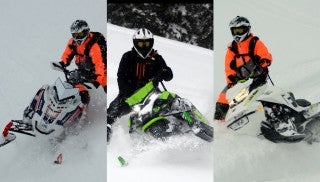
Snowmobile.com’s 2018 Mountain Snowmobile Shootout was a battle between the Arctic Cat Mountain Cat 162, Ski-Doo Freeride 165 and Polaris Pro-RMK 163.
Editor’s Note: The pictures taken, and location for the 2018 Mountain Snowmobile Shootout was in the Bridger-Teton National Forest under a Commercial Still Photography Special Use Permit; Vertical Scope, Inc., GRY478004, Use Code: 551.
Here we are wrapping up our model year 2018 mountain snowmobile shootout. This piece includes much from our guest-test riders.
Last year, we reported that Ski-Doo’s Generation 4 (G4) REV Summit X 165 was our riders’ favorite mountain snowmobile for 2017. The Pro-RMK 163 from Polaris scored in the middle for our guest-test riders. The M8000 Limited and Mountain Cat came in third, the Limited by a long ways back. The Mountain Cat performed better than the Limited. Shortly after our shootout season, Cat delivered to us an early release 2018 Ascender-chassis M8000 Sno Pro 153 with its own and new domestic-built 799cc two-cylinder, two-stroke motor. This new Cat changed how our riders felt about Cat’s mountain line, for the better – much better.
The Ascender-chassis, as we wrote in Part I (and in early Fall 2017), the 153 and 162 Mountain Cat was our Mountain Snowmobile of the Year. For numerous years, and nearly quoting ourselves, the M8000 Sno Pro or Limited or Mountain Cat in the ProClimb chassis, was our “Most Improved Mountain Snowmobile of the Year.” It never achieved our top crown as it was always improving. Then 2018 happened and Cat – finally – became competitive in the mountains.
Here are our riders’ thoughts, beginning with our 2018 Mountain Snowmobile of the Year, the Mountain Cat, followed by our Backcountry Freestyle Snowmobile of the Year, the Ski-Doo Freeride, and then our lightweight champion (though not an official crown from Snowmobile.com) the Pro-RMK 163 from Polaris.
One last note, in the wet sticky snow we rode in over the three weekends on the steep slopes outside Alpine, WY, we paid much attention to snow accumulation on a chassis, that is, how much snow stuck-to, and remained frozen-on, the Mountain Cat, Freeride and Pro-RMK.
The folks from Arctic Cat promote how ice and snow does not stay glued to its mountain chassis like the others; which is true, so we’ve learned for ourselves. But, in freshly-fallen wet and sticky snow, all three held much snow, especially up near the toe wells. For the Pro-RMK, this became a problem as ice build-up made the toe well hard to work with, not only because of snow and the narrow well, but because the foot grab bar above the foot well locked in the ice. We needed a hammer to clean it out, but resorted to kicking the ice until our toes were bruised.
The Freeride’s foot well and runningboards seemed to remain fairly clean. The Mountain Cat’s runningboards and tunnel remained somewhat clean as well; more than the other two. However, the Mountain Cat’s foot wells, like the Pro-RMK’s became plugged.
We bring this up because, when rolling a mountain snowmobile onto its side to traverse down a mountain, snow, like water, finds openings. The Pro-RMK’s and MC’s foot wells filled. But, all things equal, the MC held less snow on its tunnel. The Freeride held a little bit more snow than the MC. The Pro-RMK held the most, and after the day’s ride with a fast trail ride home, the Pro-RMK did not shed much of its added ice.
This brings us to our next year’s plan. We’re going weigh the mountain snowmobiles as we normally do – Ready to Ride (see Part I). Then prior to ending a shootout day, and while in the backcountry, we will top off each fuel and oil tank and lift each snowmobile from an old-growth pine tree to report which mountain snowmobile – for that day in that day’s condition – gained the most weight from ice and snow.
Let’s dive into our seasoned guest-test riders’ thoughts on each mountain sled, the Arctic Cat M8000 Mountain Cat 162, the Ski-Doo Freeride 165 and the Polaris Pro-RMK 163. In Part I we mentioned the Freeride came equipped with a 2.5-inch paddle track.
M8000 Mountain Cat 800 162
Roger Raymond: “By far the most improved sled of 2018. Best 3-inch track. The geometry changes indicate the new Mountain Cat is headed in the right direction. The amount of force required to initiate a side hill was just right. It was a little harder to find the balance point than the others and sometimes came all the way over. The power is better than the Pro-RMK, and feels similar the Gen4 Ski-Doo Summits and Freerides.
This is the first time in many years an M8000 from Arctic Cat was as fun to ride as the other brands’ mountain snowmobiles. Yet, it remains the heaviest. But you have to consider by the end of the day, it retains only a small fraction of melted snow the others retain.”
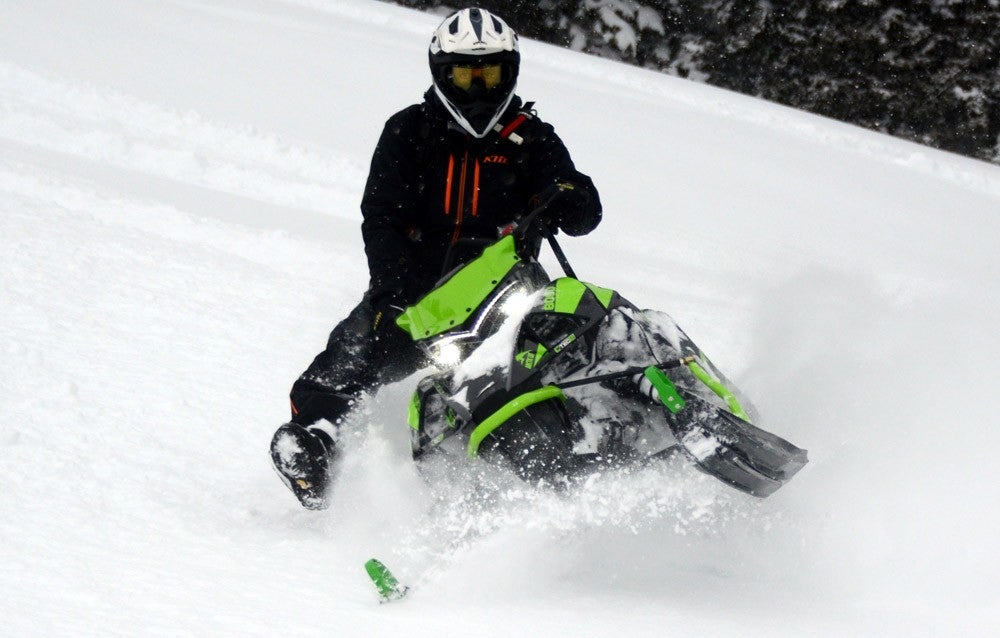
The 2018 Mountain Cat proved itself worthy to hold Snowmobile.com’s crown as 2018 Mountain Snowmobile of the Year.
Greg Huntsman: “The Mountain Cat is a vast improvement over previous M8000 models – the MC is impressive. I love the way it goes where I want it to go, all with little effort. The MC’s new 800 engine is responsive and is strong throughout its power curve.
It is a well-balanced machine. As a bonus, the MC doesn’t collect show and ice in the tunnel. It’s hard to believe my favorite is now an Arctic Cat. Kudos to them!
Future improvement: The Cat is still the heaviest. My recommendation is to shed weight without losing the sweet balance they’ve achieved.”
Kevin Allred: “The leaner and meaner Mountain Cat initiated a sidehill with smarts and ease, and held it with such confidence I was able to push it and myself harder and higher with each pass. Cat needs to pull some weight off its M8000s, all M8000 models, including the MC. Cat also needs to update its instrument cluster and handlebars; these are dated.”
Mark Radford: “This snowmobile was my favorite on the mountain! On the trails, it came in second place as my fave, this going to the Freeride. The Mountain Cat had the most power of the three.
It was the easiest to initiate a sidehill cut, and it held its sidehill line the best. I felt the most confident on this snowmobile – in every aspect of riding. The Mountain Cat’s seat height and length is perfect. Yet, its handlebars are a bit tall for me, I didn’t have as much leverage as I needed when downhill sidehilling.
However, Arctic Cat needs to put their Mountain Cat on a diet. It is by far the heaviest of the three mountain sleds. I don’t believe Cat would lessen its strength, but they certainly can eliminate waste. I recommend adding a belt drive system and replace the aluminum oil tank with a clear plastic tank – I want to see the oil level.
Cat has the capabilities to lighten the Mountain Cat – and Cat should. Fuel efficiency, rider efficiency, and the fun factor dramatically increase when a sled is light. Textron’s engineering team must figure out new technologies to shed some weight off the Mountain Cat.”
Gen4 850 Ski-Doo Freeride 165
Roger Raymond: “The Ski Doo Summit has been my favorite sled for the past few years. For some reason the suspension and track on the Freeride didn’t seem quite as perfect as the Summits we reviewed in the past. (This was a 2.5-inch paddle track.) It was still an amazing sled that’s capable of going most anywhere, but it seemed the chassis-geometry needed the 175-inch long track with three-inch paddles for it to work correctly. I experienced more track wash out and “wheelie” than last year’s 165.
The power delivery is exceptional and the balance of the T-motion works perfectly. I feel the front skis need more tail as they would tip up and plow when driving across a steep sidehill. This could be what caused the track to wash out and slide downhill.
The Start Hot (SHOT) button is fantastic. The Freeride’s seat is comfortable, but is too tall to jump across when negotiating switchbacks.”
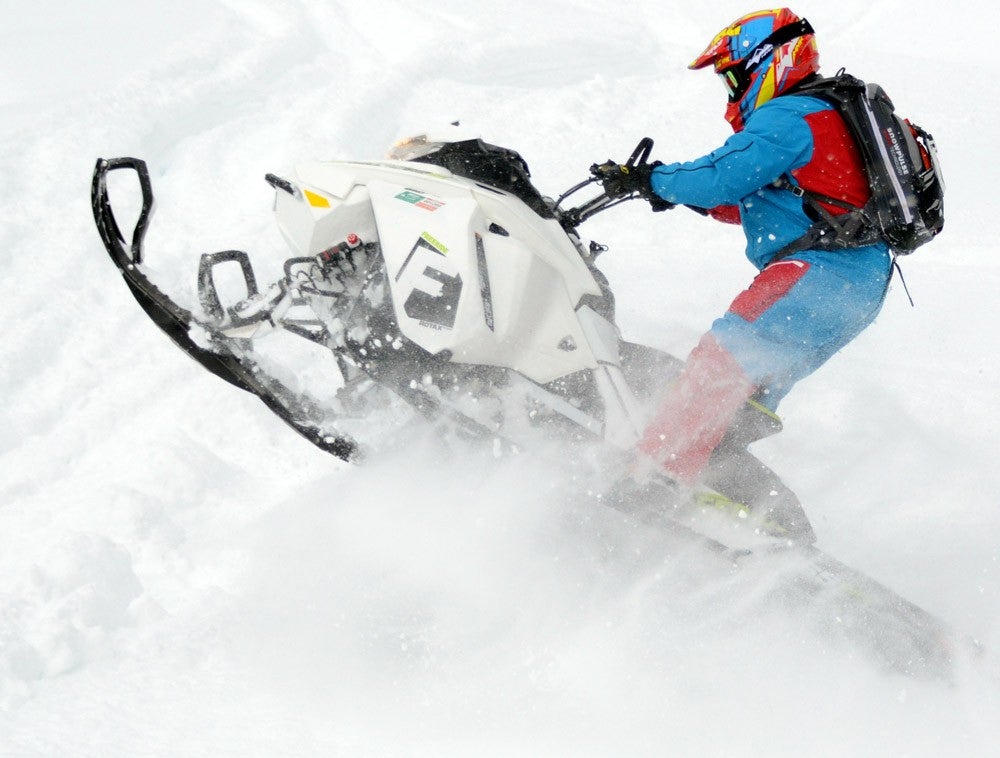
The team of guest-test riders commented the Freeride had the best – plushest ride – on the mountain slopes and on the trail.
Greg Huntsman: “This is my preferred choice for trail riding. It has a very smooth suspension, and a strong motor….I smoked the others when drag racing. Its power makes it a great climber. However, the T-motion takes some getting used to. It seems to wash out on side hills more than the Pro-RMK and Mountain Cat.
Future improvements: Work on making it stick a sidehill line better than it does; change to different track or something? Improve steering so there is less a reach when initiating a lean from a sidehill position. Ask Arctic Cat how to prevent snow and ice from collecting in the tunnel.”
Kevin Allred: “The Freeride is so easy to ride. It has a powerful motor and a smooth suspension. I do not question the Gen4’s popularity in the West. The SHOT start system…I love it. The Freeride needs a shorter and not-so tall seat. Also, the steering or front suspension is too light in the hands; I need some feedback.”
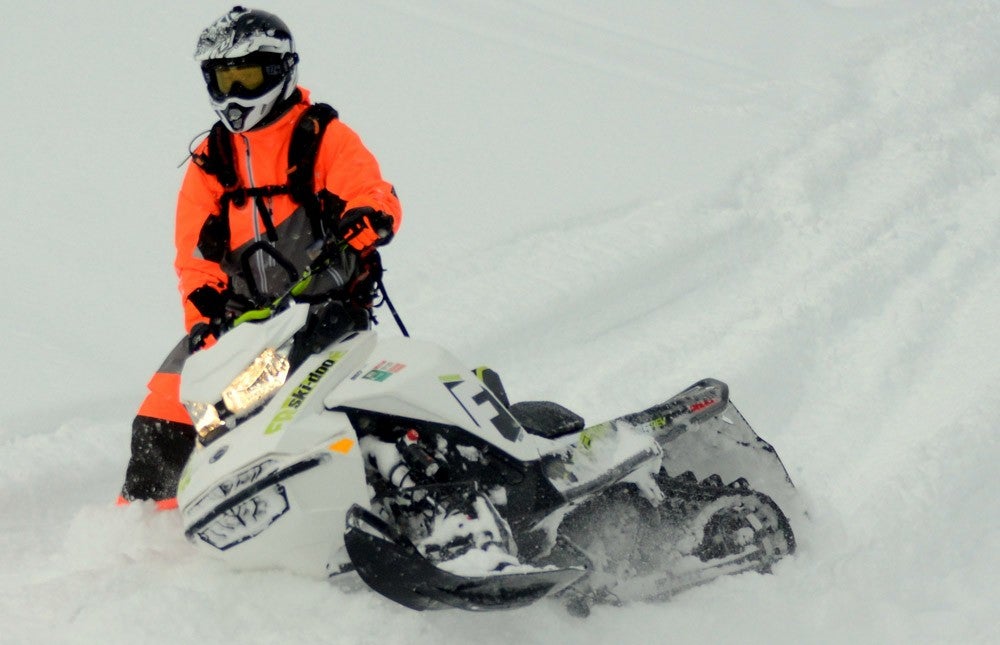
The Freeride’s tall handlebars were pleasant for some riders, and some riders felt the laydown bars too tall and awkward. Here, Roger Raymond takes the correct wrong-foot forward stance and leads with the outside foot.
Mark Radford: “I loved this snowmobile on the trail. It was smooth, fast, and comfortable to ride. When in the trees and in the powder, the tall steering post made tree running awkward; the tall handlebar post and how the bars rotated, made me feel much less confident in the trees. Ski-Doo can – and needs to –make a major improvement on its steering.
“‘SHOT’ is very nice; it makes starting the Freeride a breeze.
“The T-motion needs to go. I think the flex track makes it difficult to sidehill, especially on hard pack snow. The combination of T-motion and flex track makes it more a ditch banger than a downhill carving sled.”
Polaris Pro-RMK 800 163
Roger Raymond: “I love the lightweight feel, and how quick the AXYS gets up on top of the snow. Now in 2018, the Pro-RMK now is the most planted mountain snowmobile; meaning it requires the most effort to initiate a side hill pass. But it isn’t a problem.
The Pro-RMK has an incredible balance point. Although we did not have the time to fully adjust its Walker Evans shocks, I think less front shock preload may solve its ‘planted’ condition.
The lugs on the track are a bit stiff as they didn’t bite the base-snow under the powder.
The Pro-RMK would benefit to have more top end.
I prefer the taller handlebars of years past. I like the toe pocket bars and wish the others had them.”
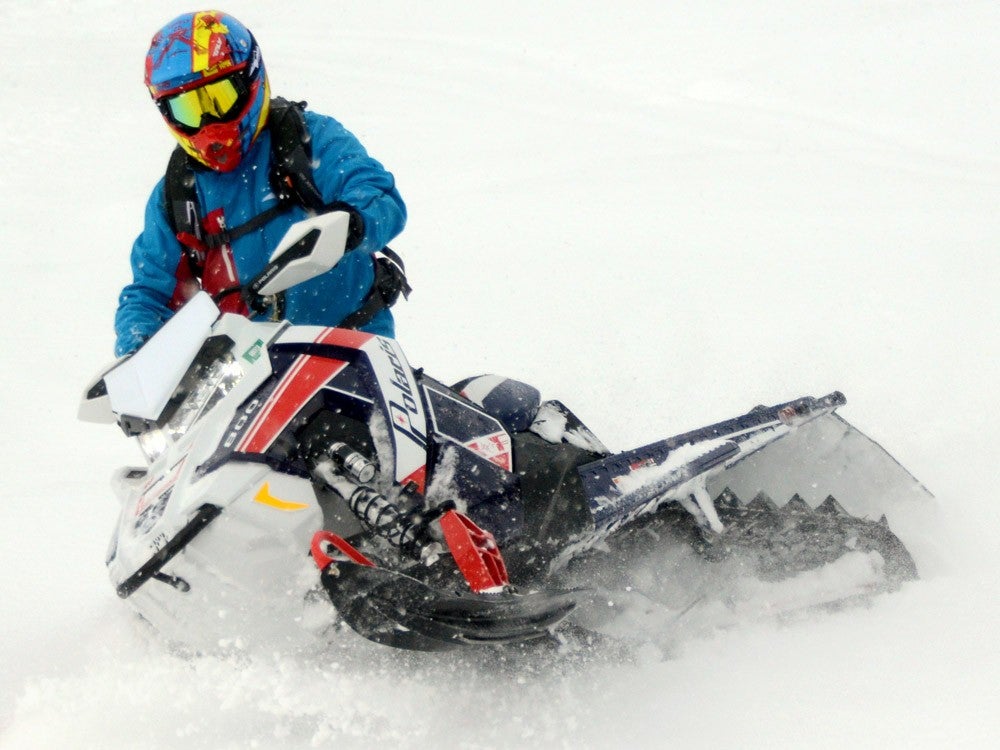
Guest-test rider Greg Huntsman spent much time with Pro-RMK, where he praised its lightweight chassis. But at times, he felt it would tip over more than the other mountain snowmobiles because of its planted feel.
Greg Huntsman: “Polaris was my favorite for many years. It’s still a great sled with a responsive motor. It is easy to navigate around trees, as it is a light (the lightest) mountain snowmobile. However, it has the least amount of horsepower. It is easy to tip on its side, at times, too far over.
Future improvements: Improve horsepower without compromising motor life. Achieve a better balanced feel like Arctic Cat. Ask Arctic Cat how to prevent snow and ice from collecting in the tunnel.”
Kevin Allred: “Riding a Pro-RMK is like hanging out with an old friend. I know the Pro-RMK well. It gets up on top the snow very well, is predictable and handles how a mountain snowmobile should. But, it feels dated. It was once the leader in initiating a sidehill run, it is not now; its spindle or the front end in whole needs some minor changes to make it the king of sidehill initiation. The Pro-RMK needs more power.”
Mark Radford: “This snowmobile was really fun; I love sidehilling the AXYS Pro-RMK. The Polaris had the harshest ride and was hardest to handle on the trails. Its motor felt under powered. On big hills and deep snow, I didn’t feel confident on the Polaris. Again, it’s under powered.
I love the RMK’s gripper skis. The seat on the Pro-RMK is high, it needs lowering
Roger Raymond summed it up. “The margin between the mountain monsters continues to narrow. All of the mountain sleds are incredibly capable to perform their work. Picking a winner is truly splitting hairs. This year it was much more challenging, not only were they all capable, they didn’t feel much different from each other. They are all converging on a chassis-system that balance and handles about the same. They are so similar now that price and durability would probably be the determining factor.”
End Results
| Matt Allred – report’s author |
| Mountain Cat and Freeride #1 – a tie |
| Pro-RMK #2 |
| Tie for #1. Freeride’s SHOT, price, gentle ride and sidehilling ease made it equal to the Mountain Cat’s snarling power, sidehilling ease and the stout Power Claw track |
| Mark Radford |
| Mountain Cat #1 |
| Freeride #2 |
| Pro-RMK #3 |
| I’d like to test a Summit X 175. |
| Roger Raymond |
| Polaris #1 |
| Mountain Cat #2 |
| Freeride #3 |
| I rate them all to be within a half-point of each other. I’d like to see how the 175 Summit X would compare to these. |
| Greg Huntsman |
| Mountain Cat #1 |
| Freeride #2 |
| Pro-RMK #3 |
| Mountain Cat easy to maneuver. Freeride has great power and suspensions. The Pro-RMK is an all-around great mountain snowmobile. |
| Kevin Allred |
| Freeride and Mountain Cat #1 – a tie |
| Pro-RMK #2 |
| This year’s mountain snowmobiles were evenly matched. To rank these snowmobiles, I’d say the Mountain Cat as #1. But, I can’t ignore the Freeride’s hard-hitting motor, SHOT and its price. |



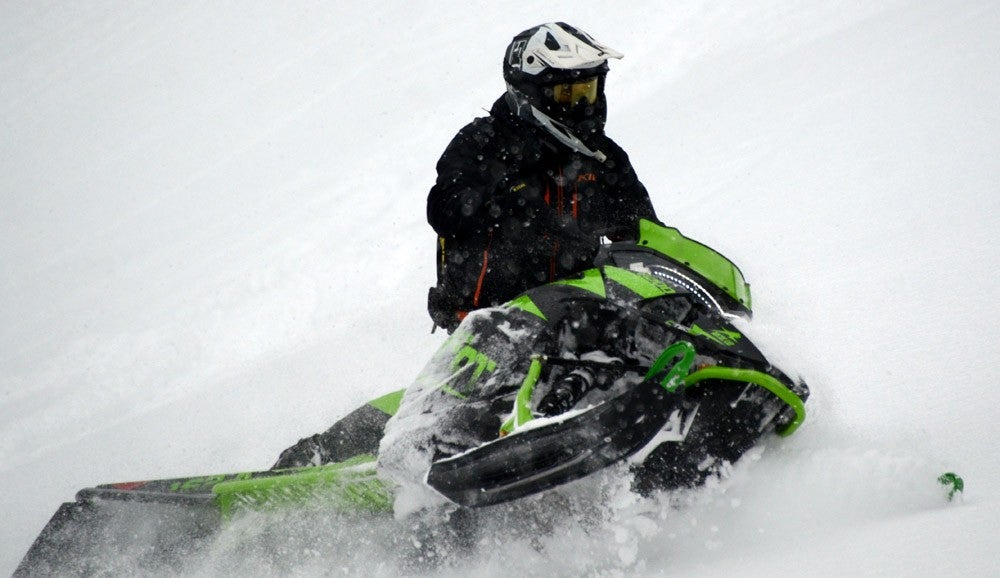
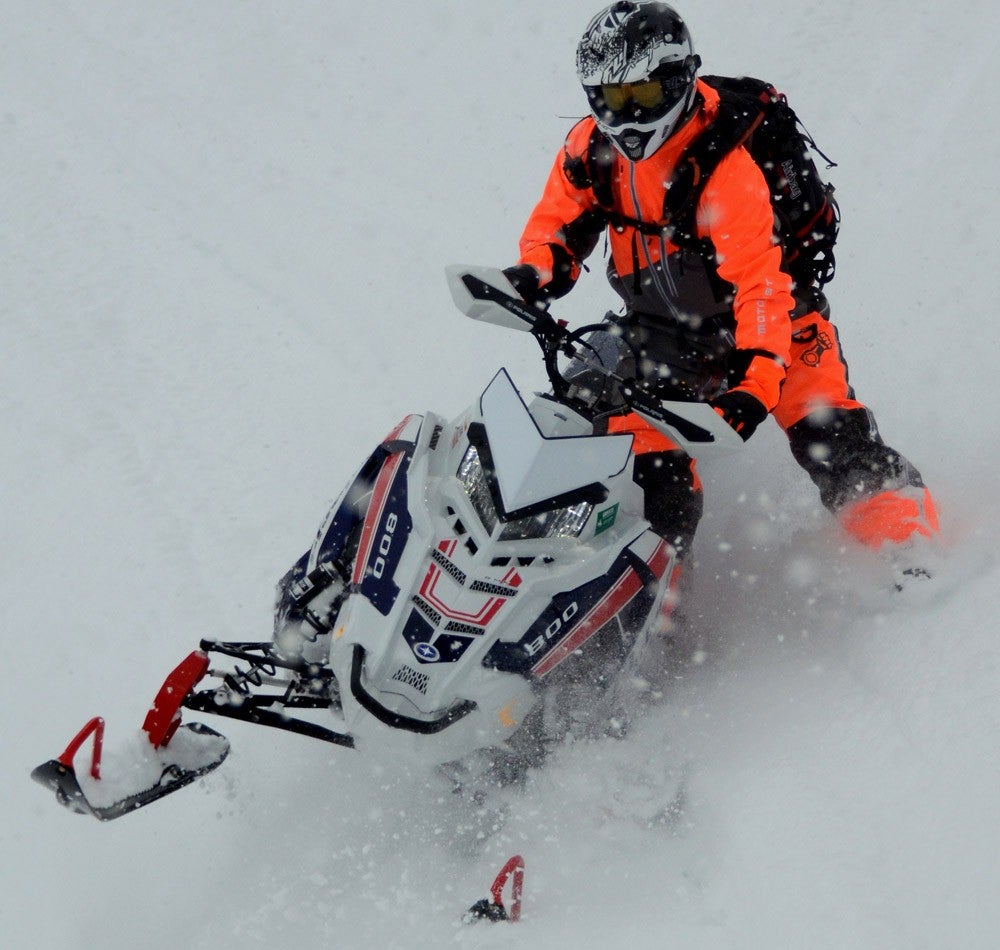
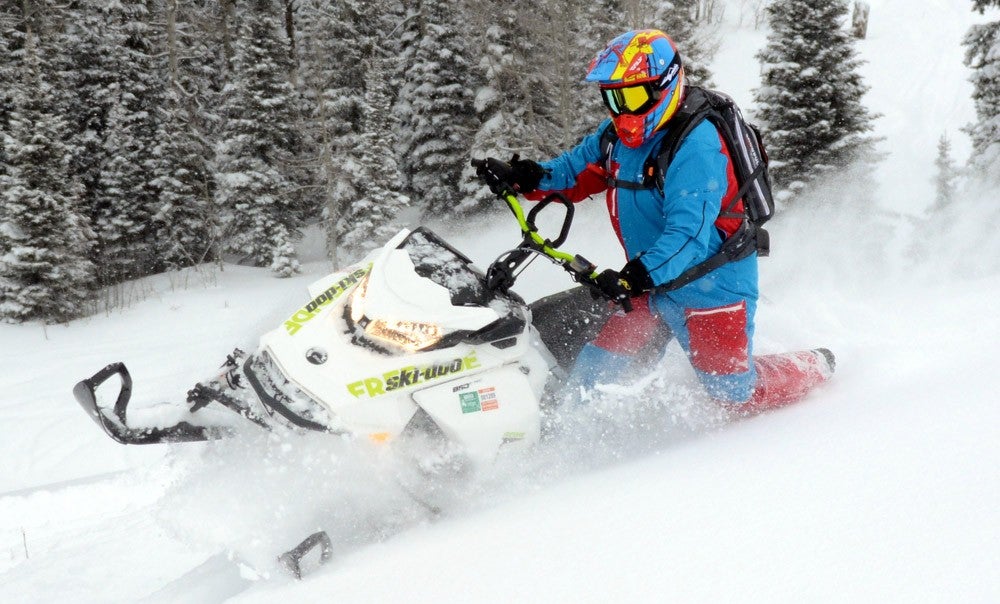
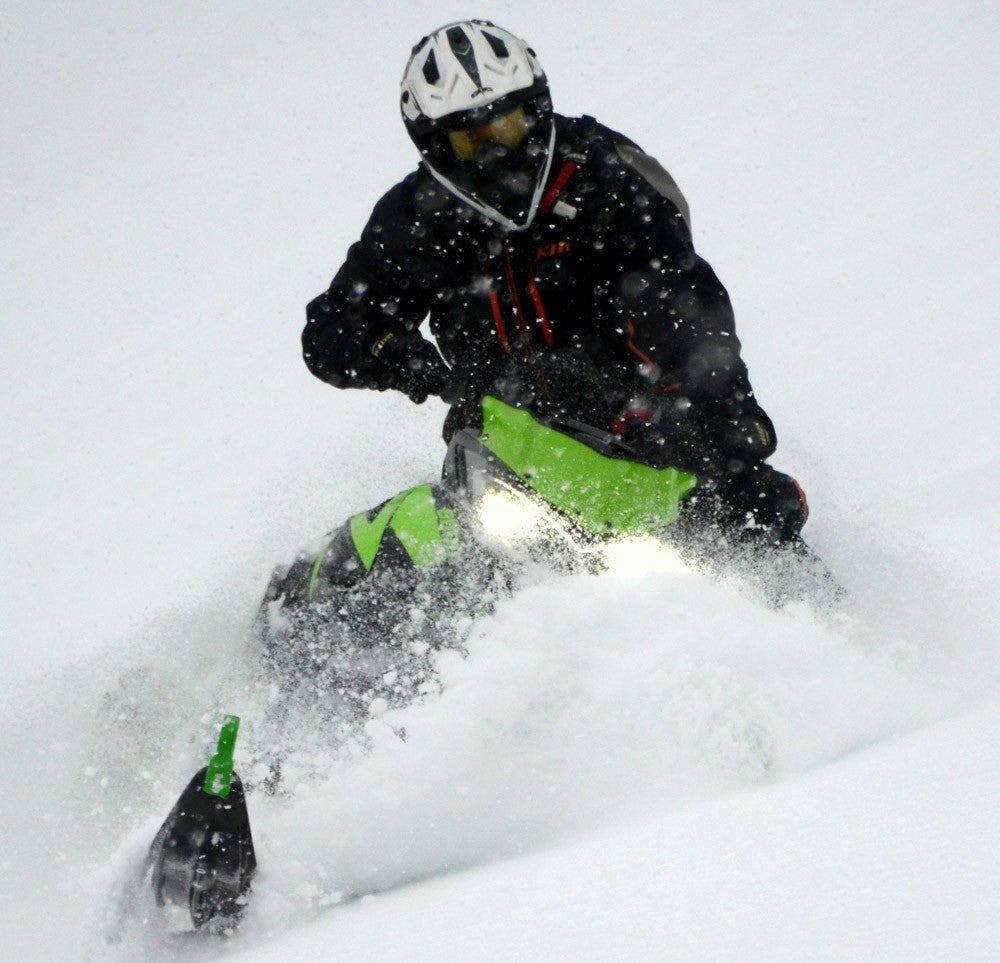
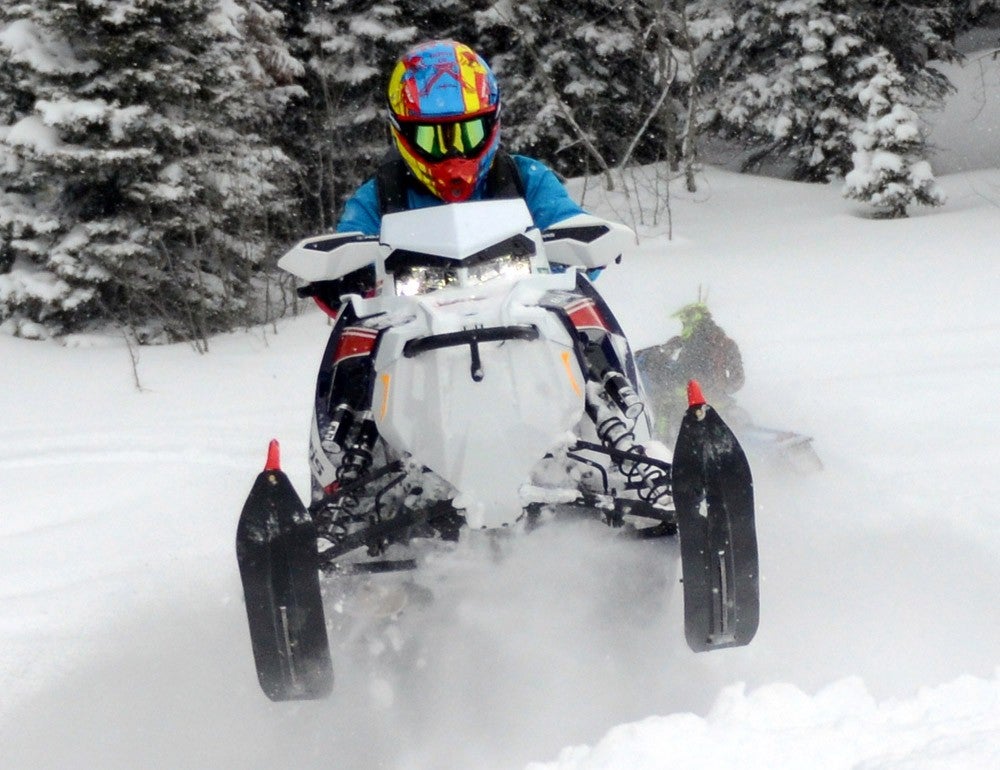
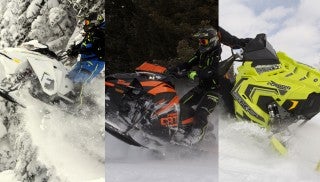
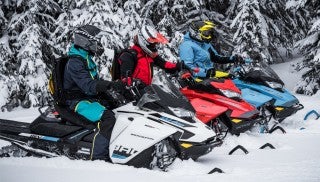
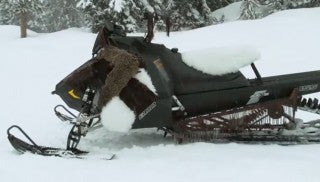


 Your Privacy Choices
Your Privacy Choices